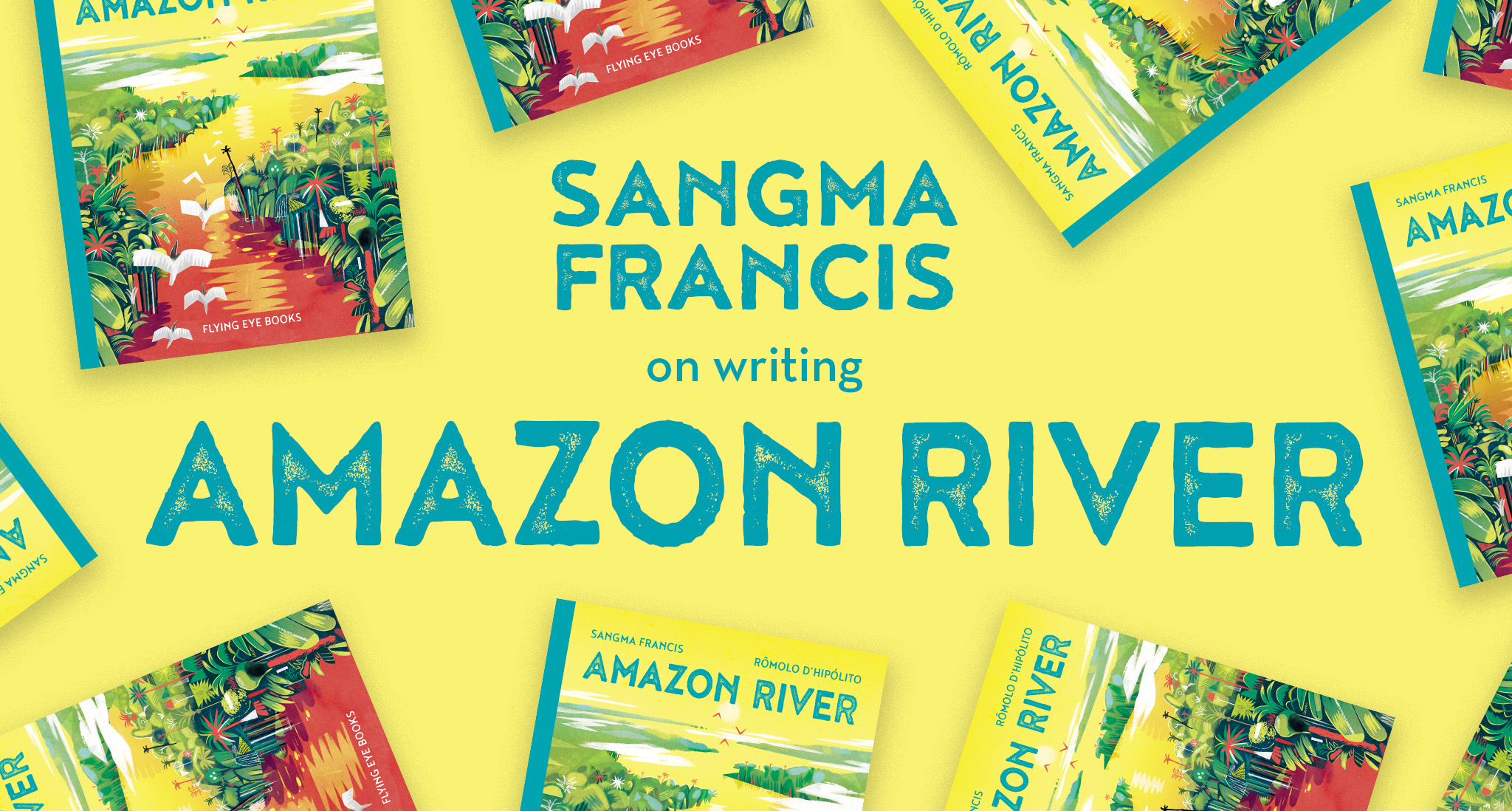
Beginning with a tiny trickle high in the mountains, small streams join together until they form the world’s largest river. We invited Sangma Francis, the author of the fantastic illustrated guide Amazon River, to talk about the process of writing the book and to tell us more about what it was like to visit the Amazon…
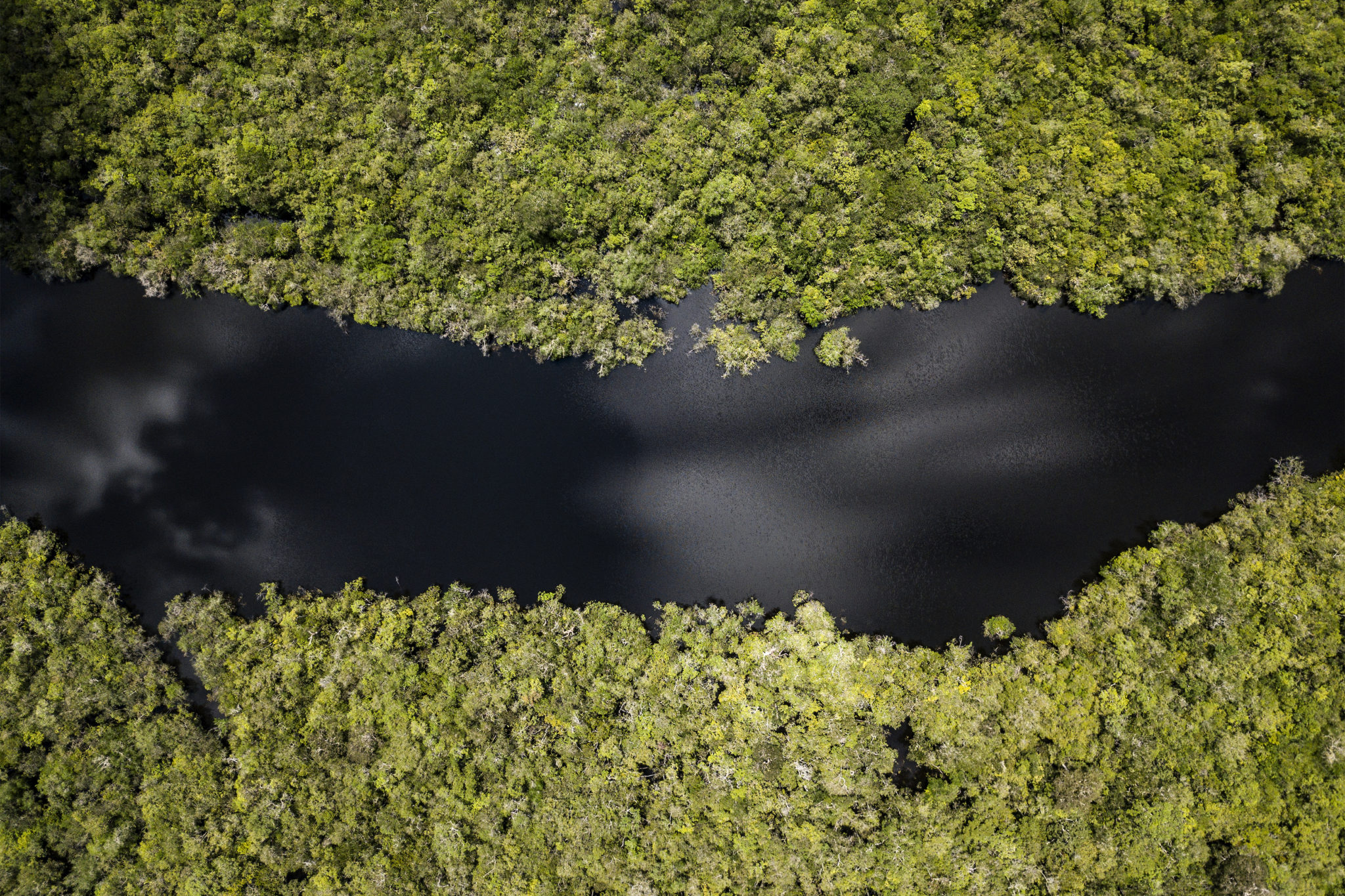
In 2018, not long after publishing my first book, Everest, I was asked by Flying Eye whether I would be interested in writing a book on the Amazon River. My initial reaction had been something close to fear, I was nervous about writing about a space so vast, the Amazon River with its 1,1000 tributaries and its basin of 7 millions square miles felt like a monstrous area to grapple, given how far and wide the limits stretched and the variety of life that lies within. What’s more, it was on a continent I had never even stepped foot on (I’ve yet to visit North America, excluding Miami airport on a very long layover). I knew that it was going to take an immense amount of research and a solid stretch of time. So I pulled up my socks and got ready to discover the most biodiverse place on Earth, a forest and river teeming with extraordinary life.
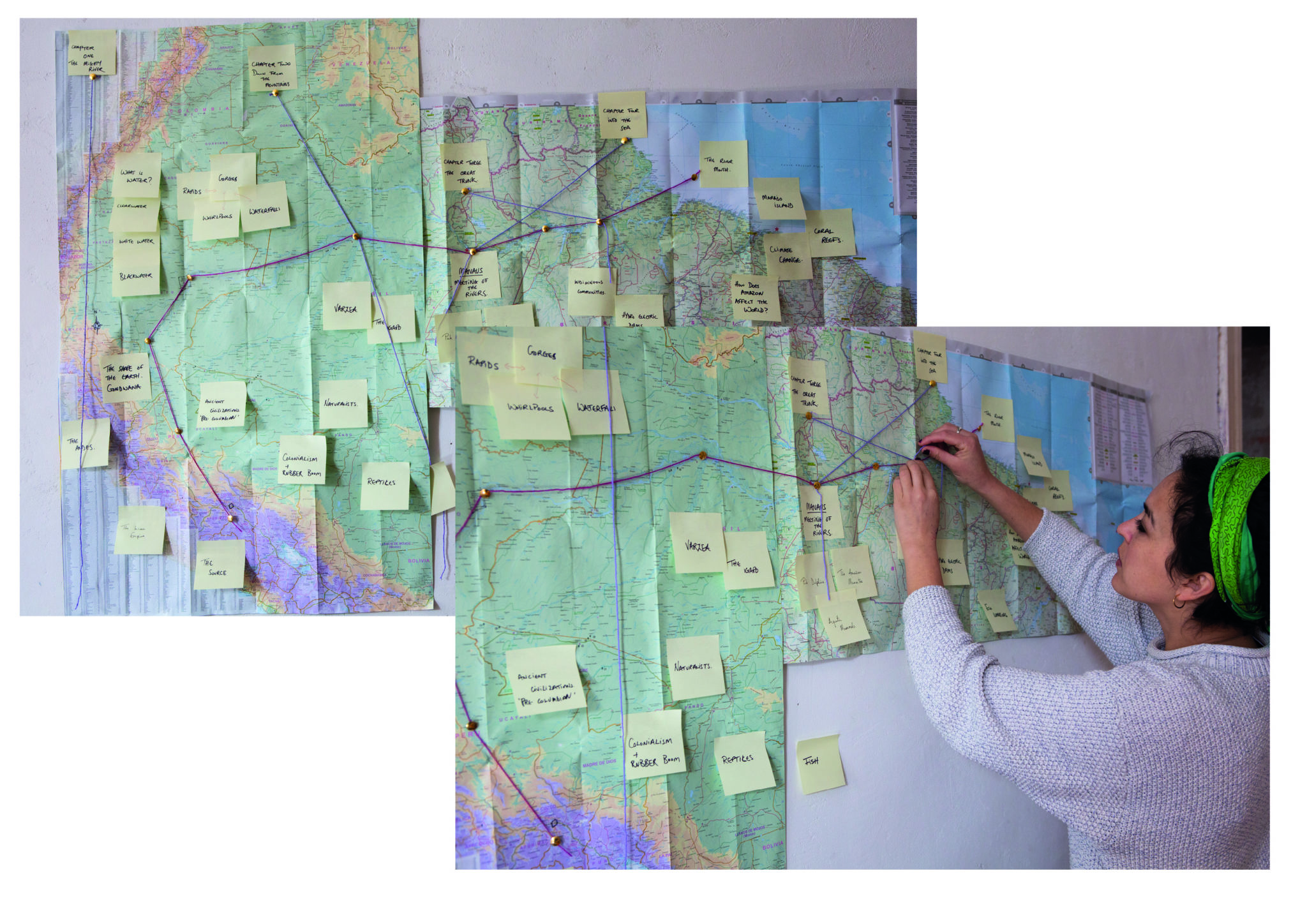
Beginning the writing process is often a messy, disordered thing where the reading, writing and structuring happen simultaneously in a half-frenzied dive into the subject matter. I write a lot and research widely in order to then distill the information into what feels most relevant and interesting.
A useful exercise is to place my notes all over the walls so that the information occupies a space larger than notebooks or screens. It’s helpful for playing with the inner structure, experimenting with how information should unfold and which pieces connect thematically. Although it doesn’t have a narrative structure, it still needed to retain an internal logic, an information staircase that could take readers to the top.
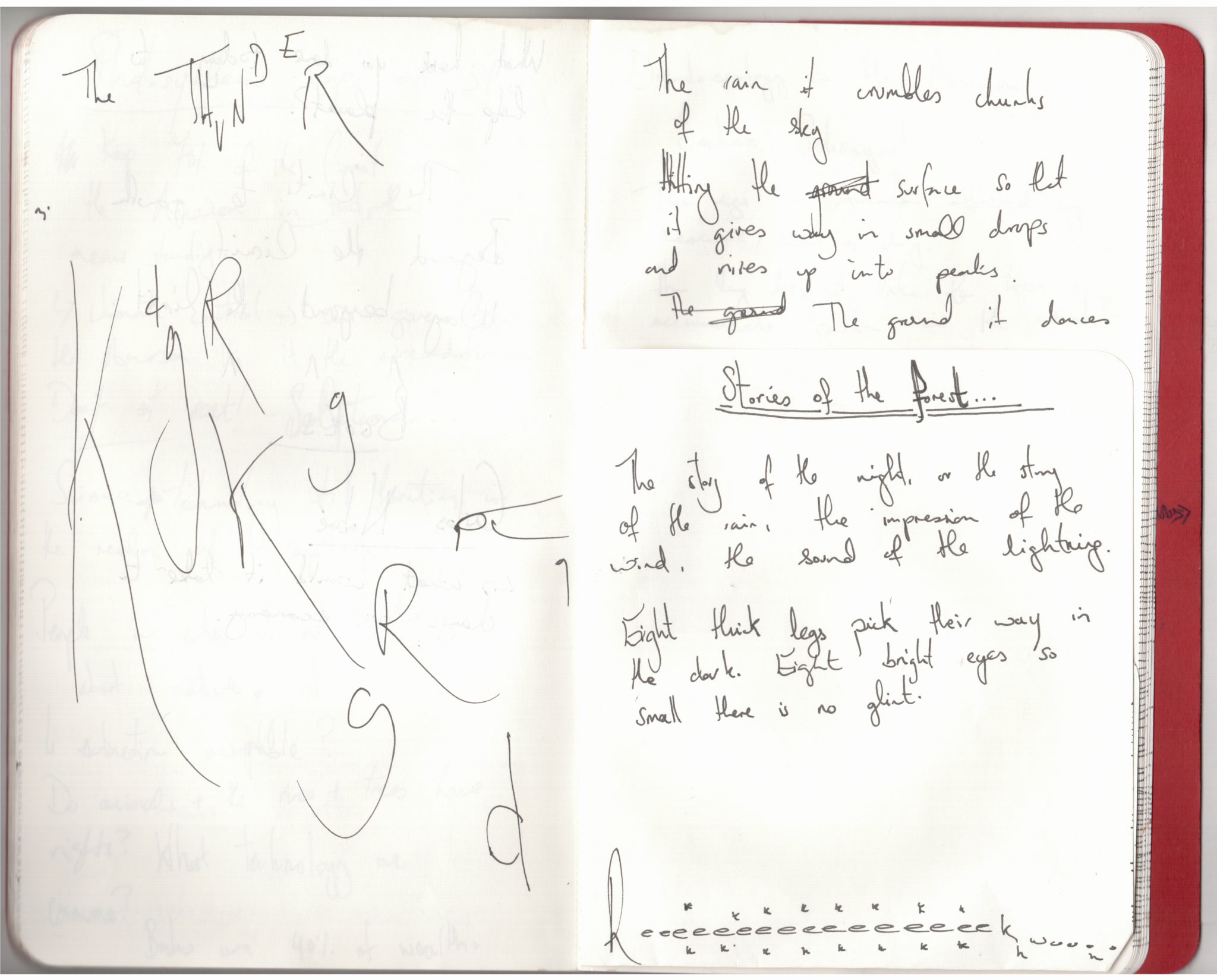
Notebooks scribbles 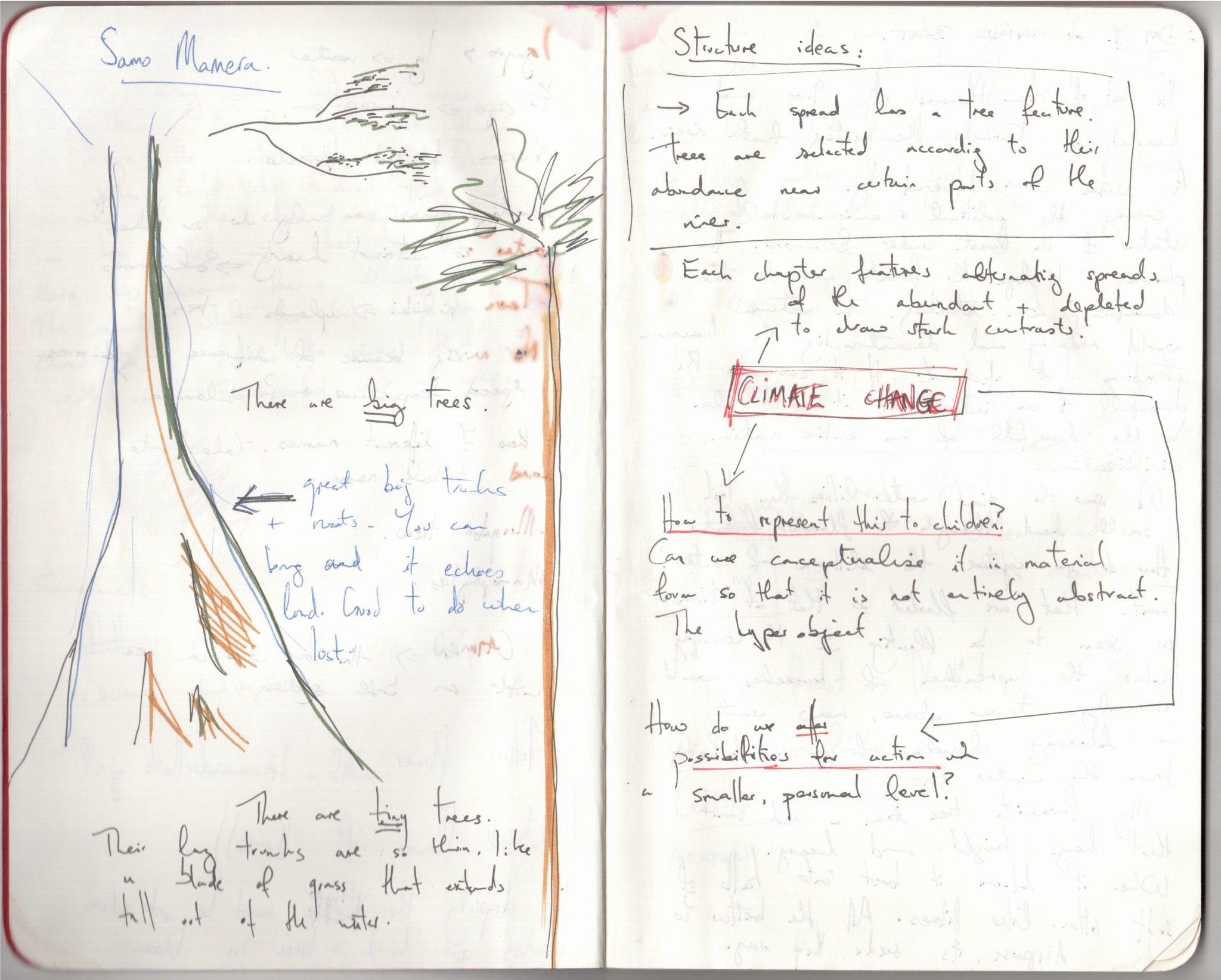
The sheer height of the trees was astounding (not reflected in my doodle)

I’m always very conscious of the language I use, I hate the idea of a child being bored, and the last thing I want is for them to disengage because the text is too heavy or dull. Where I can I add lightness and introduce sensory elements to illuminate the world while delicately trying to expand out the vocabulary I can use. I firmly believe that language is one of the gatekeepers to knowledge. When it comes to non-fiction, it’s the words, the language, we choose that can unlock large ideas or keep them hidden. I keep a constant flow of notebooks where I scribble down stray thoughts, find new ways of describing, or conceptualizing information to keep the information clear but exciting.





Photo Credit: Rogério Assis @rogerioassisfotografo / Labverde.
It was in the summer of 2019, after completing my first draft, that I was given the opportunity to attend an artist residency program in Manaus, Brazil. The LABVERDE residency in Brazil was carefully curated to encourage debate and widen knowledge on the biomes, and multiple ecosystems and ecological history of the Amazon rainforest. It offered a bright glimpse into the tangled and complex life there and how it connects to the rest of the natural world. This was where the rewriting process took place. It’s the stage I generally enjoy the most, being able to step away and come back to give the text a freshness and vigor.
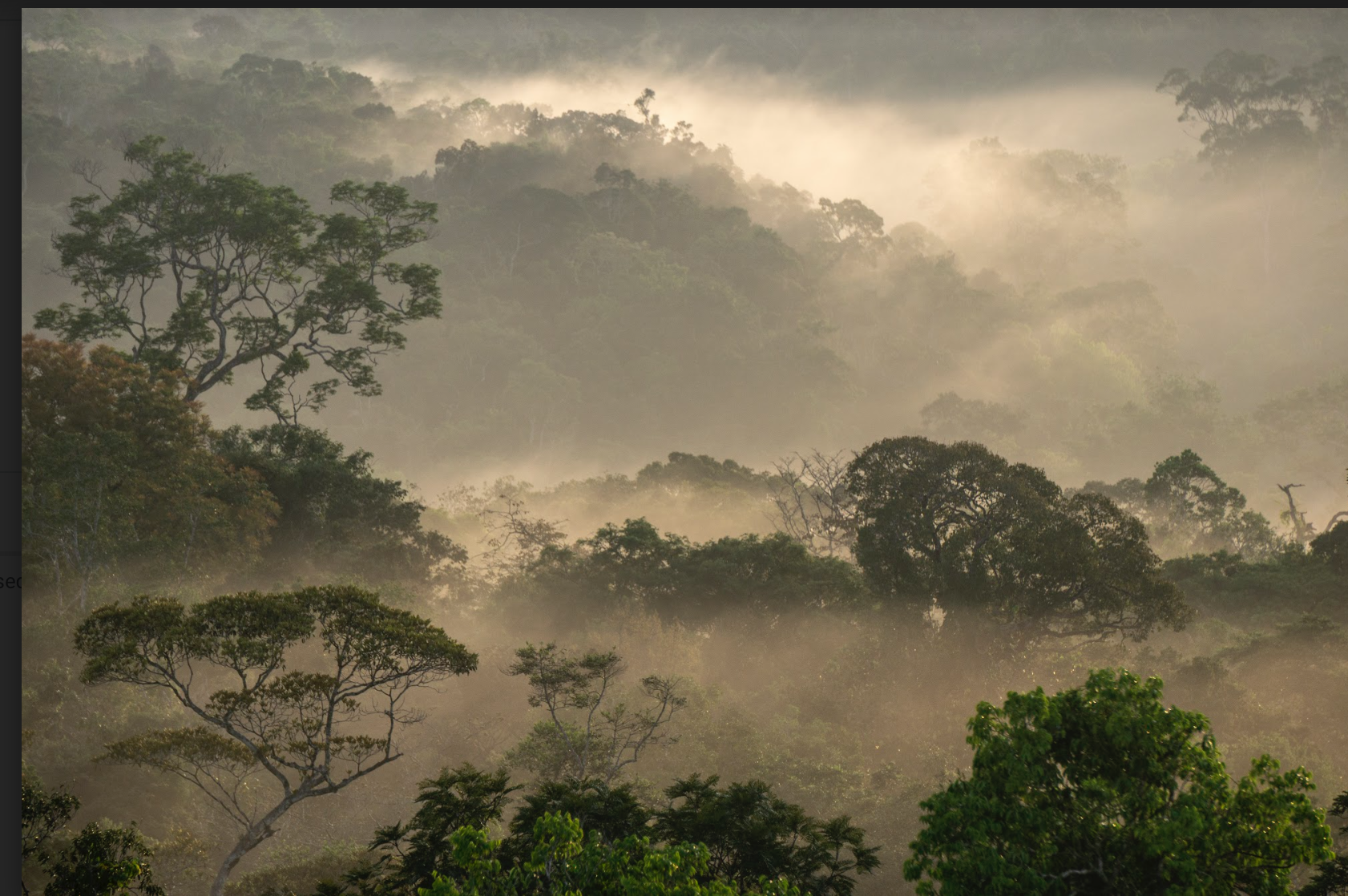
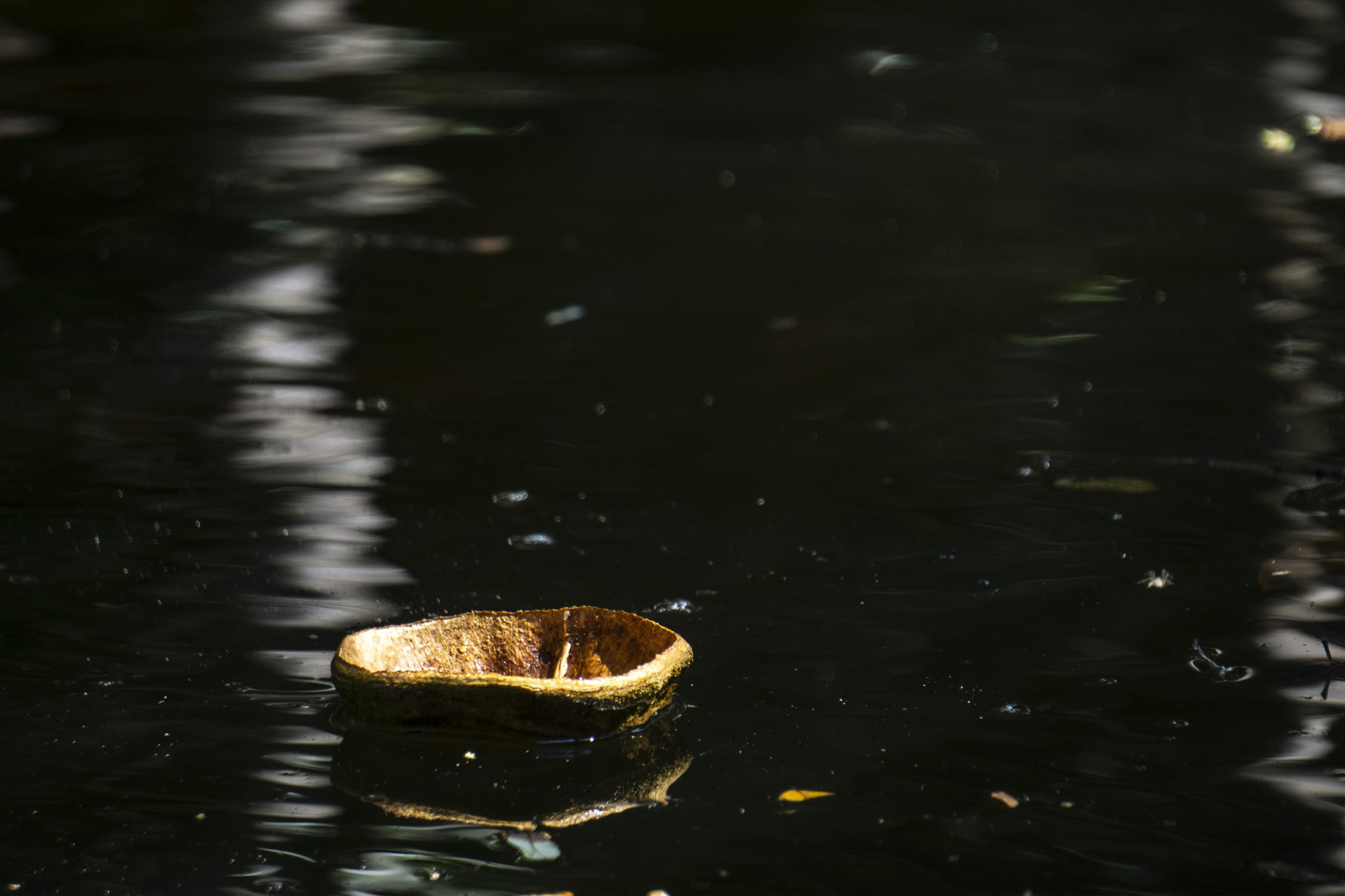
It was here that I collected sights, sounds, and new information which made its way back into the book. Things that I found surprising, or utterly delightful were threaded in. Like the fact that the trees blossom in the rainy seasons so that the seeds can be carried and spread by the flood waters. Or that the rising blanket of water in the mornings, when thrown up by millions of trees, equates to a river flowing up through the sky which affects entire weather systems!

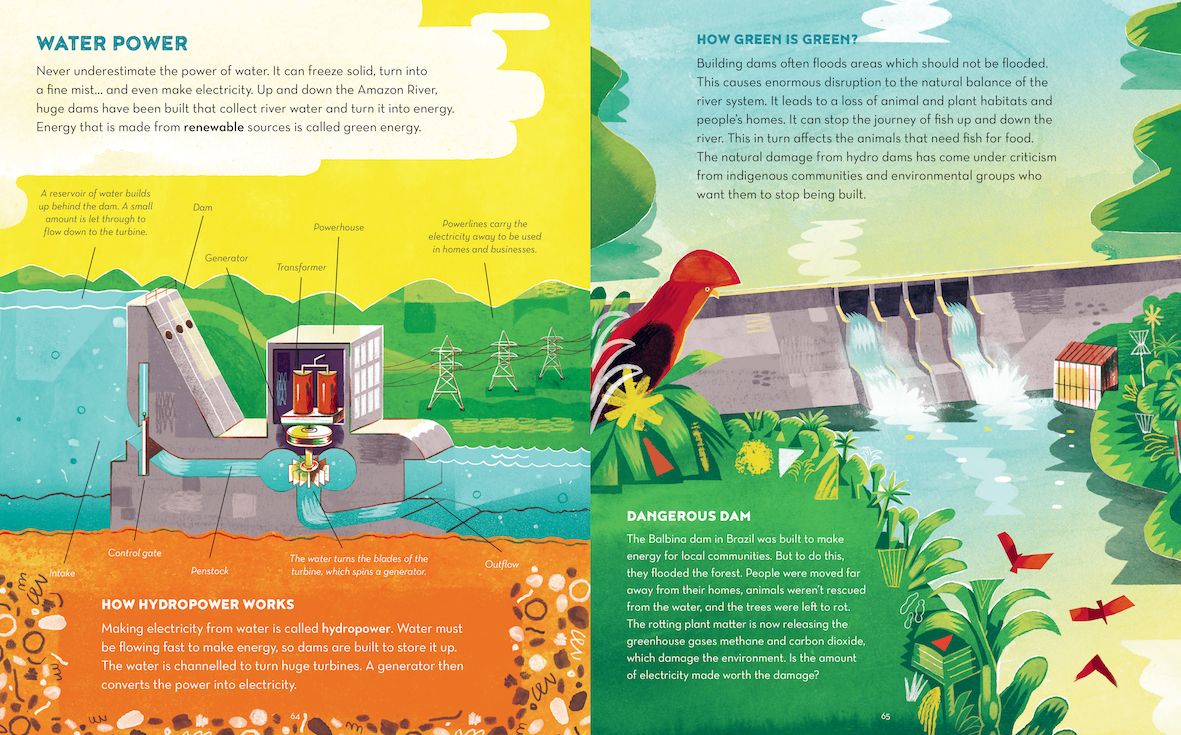
Writing about the Amazon was an important opportunity for me to discuss its destruction and how it affects the people that call it home. One of the most haunting experiences I had in Brazil was in visiting the Balbina dam on Uatumã River (pictured), a hydroelectric dam which had completely destroyed local biodiversity and displaced local indigenous communities. The water, with its putrefying trees beneath the surface, felt like a deathly space. I’m usually one to jump into any body of wild water but this time I didn’t.
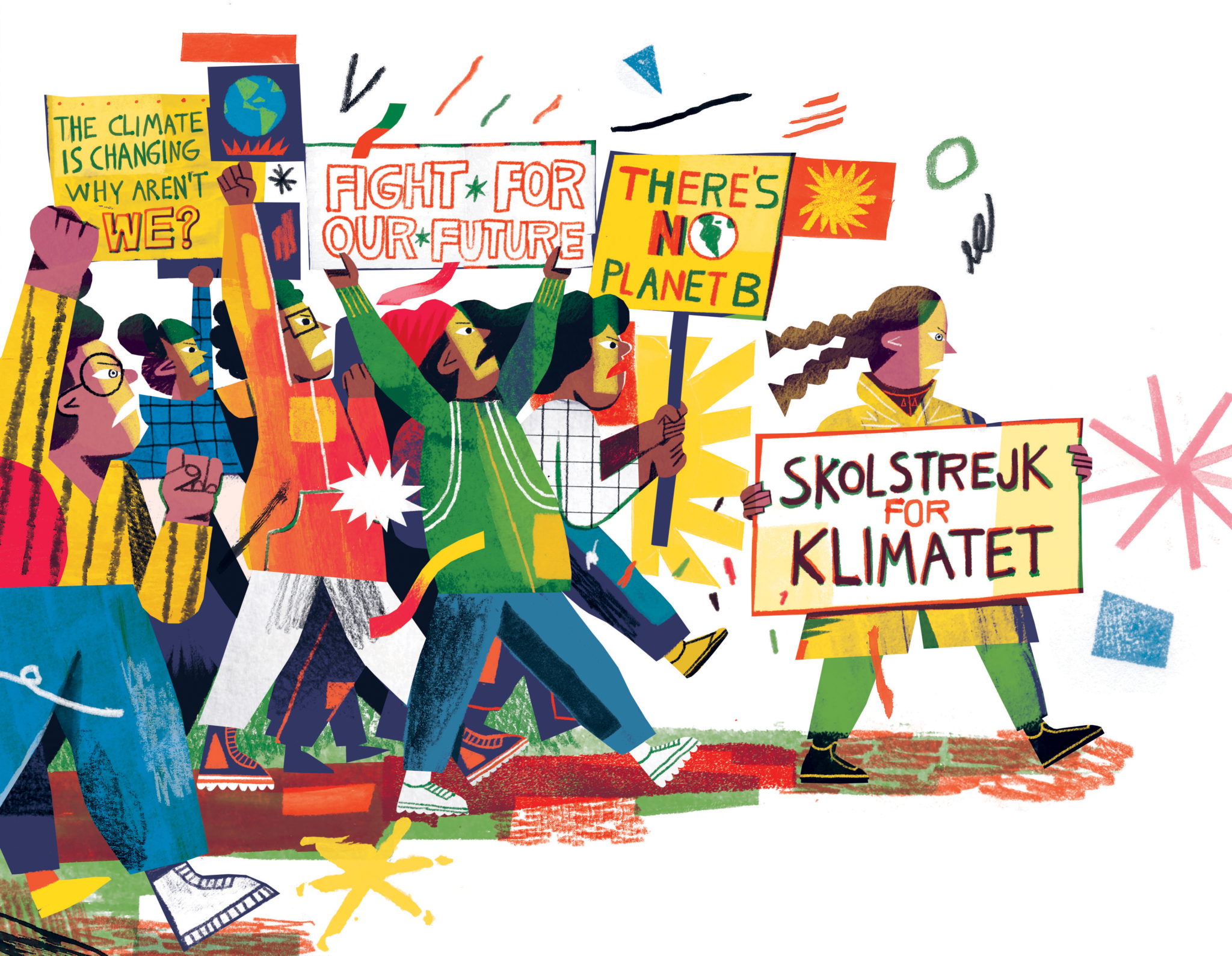
The difficulty in talking about climate change and habitat destruction, is how to pitch the tone for children, how can the subject be approached without paralysing them with fear? When we talk of climate change, can we offer hope, or only ask for courage? This is where the work of the Fridays for Future’s movement is incredibly encouraging. Whether it’s on a community level or linked through a network of international demonstrations, the act of gathering, connecting, showing solidarity is an important way to learn from like-minded people while making yourself heard. It can also be a means for discovering small local actions that can make a small difference. It’s a sentiment that I wanted to echo back through the book.
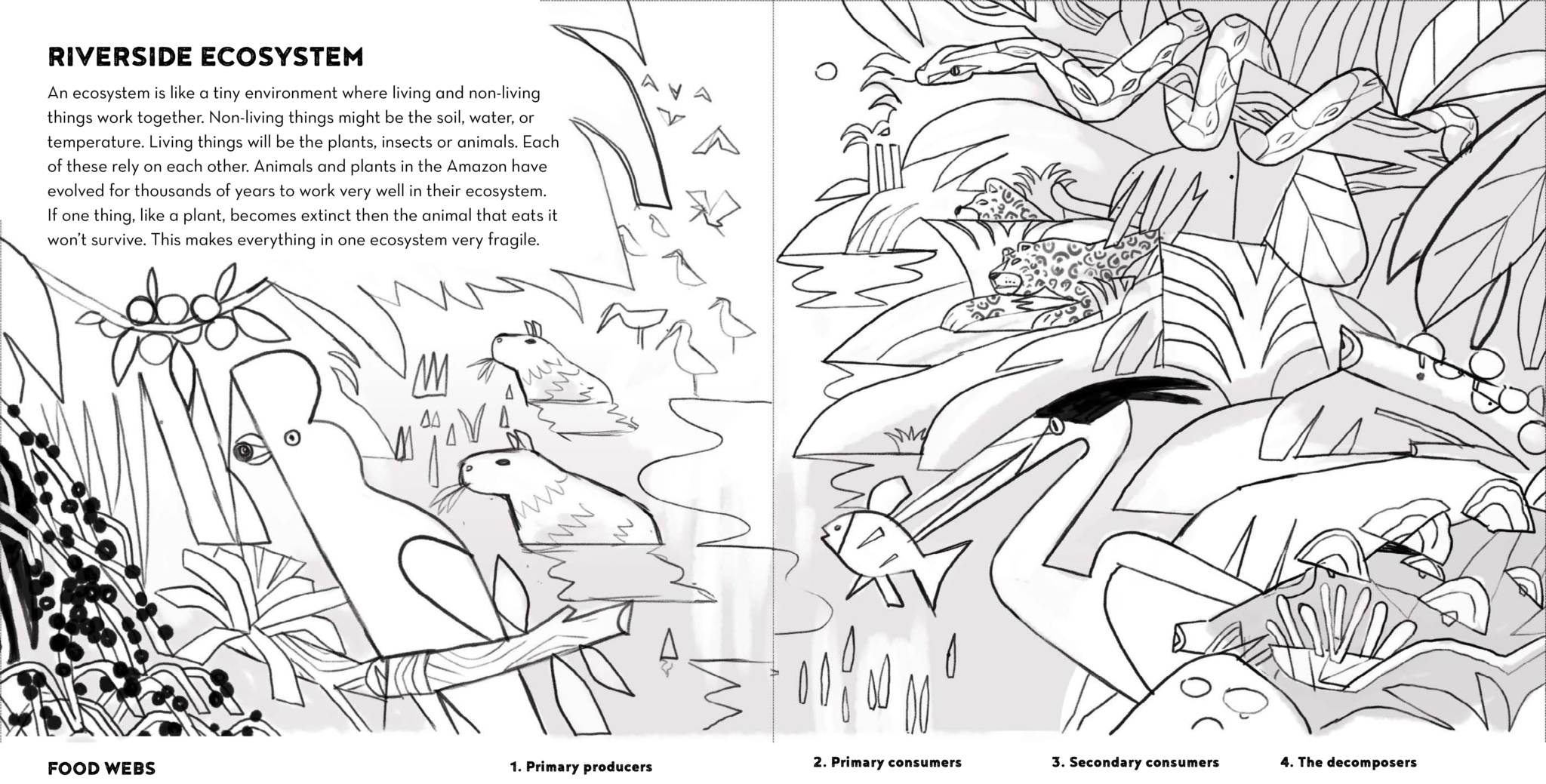
The real magic of the book comes together towards the end, between the marriage of text and illustration, the design, the edits, the colour palette were all brought together with such consideration. Seeing Romolo’s illustrations was one of the biggest thrills! Each page feels vibrant and so full of movement. I was told that Romolo enjoys doing a lot of his own visual research and this something you can spot throughout the book. He fills out the world with understated details, look out for the macaws, toucans, sloths, and llamas which emerge through the foliage to bring an extra depth to each page.
I hope that readers will enjoy learning about the Amazon river and rainforest as much as I did. What I really hope is that it encourages readers to go out and learn even more, about the rivers nearby and in the Amazon rainforest.
My thanks to INPA, Labverde and Flying Eye for supporting the research.

Amazon River is out now and available worldwide from flyingeyebooks.com
Discover the process of Amazon River illustrator, Rômolo D’Hipólito, as he takes over the @flyingeyebooks Instagram page on Monday 9th August!